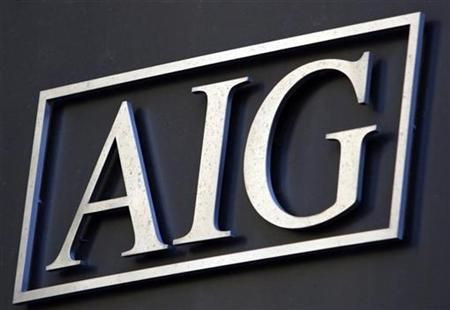American International Group: Is Now a Good Time to Consider AIG? - Stock Review
ANALYSIS

American International Group (AIG). Just the mere mention of the name is certain to make some investors' blood boil.
And with good reason: AIG, an insurance and financial services giant, made a series of poor choices last decade that led to many regulatory issues. Combine that with a broader credit market that worsened massively with the bursting of the housing bubble, and result, as would be the case with any imprudent business model, was a nose-diving stock price in 2007.
However, in AIG's case, it meant more than shareholder equity deterioration. AIG's myriad of interconnections to large institutions necessitated a U.S. Federal Reserve intervention -- initially an $85 billion credit facility to enable the company to meet increased collateral obligations, following a credit downgrade. In exchange, the Federal Reserve received stock warrants for a 79.9 percent equity stake in AIG.
Later, in May 2009, the Fed, along with the U.S. Treasury, increased their support of AIG with an investment as large as $70 billion, a $60 billion credit line and $52.5 billion to buy mortgage-backed assets owned or guaranteed by AIG, which increased the total U.S. government assistance available to AIG to as much as $182.5 billion. Later, modifications to the plan would convert the assistance to trusts for the benefit of the U.S. Treasury, with the department controlling approximately 77.9 percent of the voting power of AIG's common stock.
AIG will continue to restructure and repay the government and this will dilute common shareholder value, and as such the stock is a decidedly high-risk play. Don't consider AIG if you are a low-risk or moderate-risk investor.
That said, the view from here argues that AIG will continue to make the right moves in the two years ahead, and share upside is likely. Forecasting AIG's performance and stock price beyond two years has a large margin of error, due to the uncertainty regarding so many macroeconomic and regional economic factors, hence a 3-year-plus forecast won't be attempted here, but know that the calculation here calls for AIG to trade at/near $30 by the end of 2012.
Is AIG a Barometer?
Essentially, the argument for AIG is a "statement of confidence" in U.S. policy markers' responses to the financial crisis to-date. Although hardly perfect, those inventions are working, and they will continue to trend the U.S. economy toward stronger GDP growth and job growth, and credit markets toward normalcy, in the quarters and years ahead, with AIG's stock price being a good barometer of systemic health. What's more, with the U.S. better than half-way through the financial crisis, AIG's shares are undervalued with a P/E of about 2.5, with institutional investors only recently sensing that AIG's shares deserve a higher multiple.
In other words, if AIG wins, we all win; if AIG fails, commercial activity will probably be very close to the barter system.
In Robert Rubin-esque risk/reward terms, the chance for success with AIG outweighs the chance for failure, triggering the "buy" call. I amend that theory by adding this evaluation: Why not consider AIG? If you're a U.S. citizen, you're already paying a portion of its ownership cost, so why not give yourself a chance for the upside?
The Thomson Reuters First Call FY2011/FY2012 EPS estimates for AIG are 92 cents to $2.65. That FY2011 EPS estimate looks about 10 percent low, and the FY2012 EPS estimate about 15 percent low, according to my analysis
Technical Analysis: AIG shares are also a mini-barometer for the U.S. economy, and the stock formed a bear hug this year, walking down from about $50 in January to $19 in October. But that's where the selling stopped, and AIG has since moved higher, in volatile fashion, including a move back above the key, 50-day moving average, to trade at/near $24, and there's scope to $30 and beyond.
Stock Category: Don't consider AIG if you cannot tolerate high risk. Also, there's 50 percent chance you'll lose your entire investment with AIG over a 3-year period.
American International Group's shares Monday at mid-day were down 25 cents to $23.60.
2012 Outlook: I view AIG as a long-term play, but if you're looking to sell AIG within the year, it's probably best to take your profits after it rises to $28-29, if it fails to rise above $30.
Stock Analysis: American International Group is a high-risk stock. If an investor has already purchased the company's shares, I'd hold them. If not, I'd consider buying a 25% position in AIG now, and another 25 percent in one month, if the U.S economic conditions don't worsen substantially. Under any circumstance, I wouldn't buy more than 50% of my AIG position before January 2012 and I'd put a sell/stop loss at: $14.
- -
Disclosure: L.C. Jacobs of New York, N.Y. reviews stocks on a quarterly, semi-annual, and annual basis.
L.C. Jacobs has no positions in stocks reviewed, but does own federal, municipal, and corporate bonds.
To contact L.C. Jacobs about this stock review, write to: stockreview@mail.com
© Copyright IBTimes 2025. All rights reserved.





















